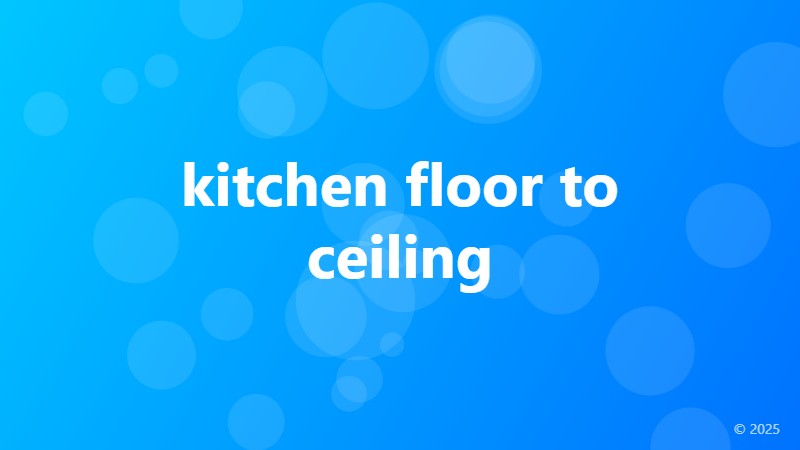kitchen floor to ceiling

Transforming Your Kitchen with Floor to Ceiling Design
When it comes to kitchen design, one of the most impactful elements is the floor to ceiling layout. This style, also known as "floor-to-ceiling" or "ceiling-to-floor," refers to the seamless transition from the floor to the ceiling without any visual breaks or interruptions. The result is a sense of height, openness, and grandeur that can elevate the entire kitchen space.
The Benefits of Floor to Ceiling Design
So, what makes floor to ceiling design so special? For starters, it creates a sense of verticality, drawing the eye upwards and making the ceiling appear higher than it actually is. This is especially beneficial in smaller kitchens where every inch counts. Additionally, the lack of visual breaks between the floor and ceiling makes the space feel more expansive and airy.
Another advantage of floor to ceiling design is its ability to create a sense of continuity. By eliminating the traditional separation between the floor and ceiling, the space feels more cohesive and harmonious. This, in turn, can make the kitchen feel more luxurious and high-end.
Design Ideas for Floor to Ceiling Kitchens
So, how can you incorporate floor to ceiling design into your kitchen? Here are a few ideas to get you started:
One popular approach is to use floor-to-ceiling cabinets or shelving units. These can be designed to fit seamlessly into the space, creating a sense of continuity between the floor and ceiling. You can also use glass or open shelving to add visual interest and create a sense of airiness.
Another idea is to incorporate floor-to-ceiling windows or sliding glass doors. This not only brings in natural light but also creates a sense of connection to the outdoors. Plus, the lack of visual breaks between the floor and ceiling makes the space feel more expansive.
Challenges and Considerations
While floor to ceiling design can be incredibly effective, there are also some challenges and considerations to keep in mind. For example, this style can make the space feel overwhelming or cavernous if not balanced properly. It's essential to incorporate design elements that create a sense of warmth and coziness, such as textiles, rugs, and decorative accents.
Additionally, floor to ceiling design can be more expensive than traditional kitchen design. This is because it often requires custom cabinetry, specialized materials, and expert installation. However, the end result can be well worth the investment, especially if you're looking to create a truly show-stopping kitchen.
In conclusion, floor to ceiling design is a kitchen design trend that's here to stay. By creating a sense of height, openness, and grandeur, this style can elevate the entire kitchen space and make it feel more luxurious and high-end. Whether you're looking to renovate an existing kitchen or design a new one from scratch, floor to ceiling design is definitely worth considering.